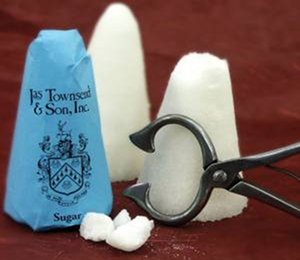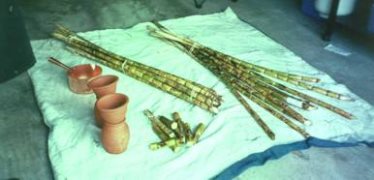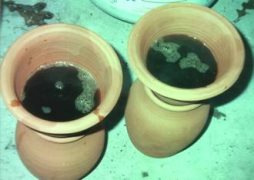It is thought that cane sugar was first used by humans in Polynesia from where it spread to India.
In 510 B.C., the Emperor Darius of what was then Persia invaded India where he found the reed which gives honey without bees
.
The secret of cane sugar was kept a closely guarded secret whilst the finished product was exported for a rich profit.
It was the major expansion of the Arab peoples in the seventh century A.D. that led to a breaking of the secret. When they invaded Persia in 642 A.D. they found sugar cane being grown and learnt how sugar was made.
The Arabs adopted the techniques of sugar production from India and then refined and transformed them into a large-scale industry. They set up the first sugar mills, refineries, factories and plantations. The Arabs and Berbers diffused sugar throughout the Arab Empire and beyond across much of the Old World, including Spain and Sicily after they conquered the Iberian Peninsula in the 8th Century A.D.

Early Sugar Refining
Sugar was only discovered by Western Europeans as a result of the Crusades in the 11th Century A.D.
Crusaders returning home talked of this new spice
and where they encountered caravans carrying sweet salt
.
The first sugar was recorded in England in 1099 at the conclusion of the First Crusade.
Crusade chronicler William of Tyre, writing in the late 12th century, described sugar as very necessary for the use and health of mankind
.
After the Crusades, sugar began to rival honey as the preferred sweetener of Europeans.
The subsequent centuries saw a major expansion of Western European trade with the East, including the importation of sugar.
It is recorded, for instance, that sugar was available in London at two shillings a pound
in 1319 A.D.
This equates to about US$100 per kilo at today's prices, so it was very much a luxury.

Sugar Loaf
Medieval sugar was usually made by pouring the boiled sugar cane juice into a mold, possibly made of clay. This resulted in a from of crude sugarloaf. The required amount of sugar was simply cut or scraped off.
In the 15th Century A.D., European sugar was refined in Venice, confirmation that even then when quantities were small,
it was difficult to transport sugar as a food grade product. In the same century, Columbus sailed to the Americas, the New World
.
It is recorded that in 1493 he took sugar cane plants to grow in the Caribbean.
The climate there was so advantageous for the growth of the cane that an industry was quickly established.


